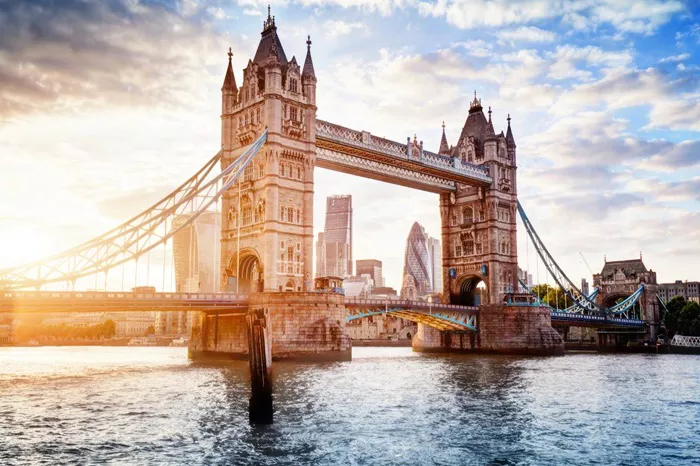London is a city steeped in history, with countless landmarks that tell the stories of its past. From royal palaces to iconic churches and world-renowned museums, the city offers a wealth of historical sites to explore. Here are three of the best historical places to visit in London, each offering a unique glimpse into the city’s rich heritage.
Tower of London
One of London’s most famous landmarks, the Tower of London is a must-visit for history enthusiasts. Dating back to the Norman Conquest of 1066, this fortress has served multiple roles throughout the centuries, including a royal palace, a military stronghold, a prison, and the current home of the Crown Jewels.
Key Attractions
The White Tower: The oldest part of the Tower of London, the White Tower is home to a fascinating collection of historical armor and weaponry. It was originally constructed by William the Conqueror and remains a symbol of the fortress’s defensive role.
The Crown Jewels: The Crown Jewels are a breathtaking display of the British monarchy’s wealth and power. Visitors can view the ceremonial regalia used during royal coronations, including the famous Imperial State Crown and St. Edward’s Crown.
Yeoman Warders (Beefeaters) Tours: The Beefeaters, iconic guardians of the Tower, lead entertaining and informative tours, recounting the Tower’s colorful history. They share stories of famous prisoners, including Anne Boleyn and Guy Fawkes, adding a personal touch to the experience.
Historical Significance
The Tower of London is steeped in tales of intrigue and mystery. It was the site of numerous executions, including that of Anne Boleyn, the second wife of Henry VIII. The legend of the ravens that reside within the Tower—believed to be symbolic of Britain’s fortune—adds a mythical dimension to its history. The Tower’s role in the history of the monarchy, particularly its involvement in royal intrigues, makes it a fascinating site for visitors interested in Britain’s royal past.
Westminster Abbey
Westminster Abbey is a UNESCO World Heritage Site and one of the most important religious buildings in the United Kingdom. Known for its stunning Gothic architecture, the Abbey is the site of royal coronations, weddings, and funerals, making it an integral part of British history.
Key Highlights
Coronations and Royal Weddings: Since 1066, Westminster Abbey has been the venue for every English and later British coronation. Famous events held here include the coronation of Queen Elizabeth II in 1953 and the weddings of Prince William and Kate Middleton, and Prince Harry and Meghan Markle.
Tombs and Memorials: The Abbey houses the tombs of numerous British monarchs, including Queen Elizabeth I and Henry VII. It is also the final resting place of many celebrated figures from the arts and sciences, such as Isaac Newton, Charles Darwin, Geoffrey Chaucer, and Charles Dickens. These memorials allow visitors to reflect on the profound impact these individuals had on history.
Poets’ Corner: A special area within the Abbey, Poets’ Corner is dedicated to some of the greatest writers in British history, including William Shakespeare, Samuel Johnson, and George Eliot.
Historical Significance
Westminster Abbey has been a center of British religious and political life for over a thousand years. Its association with the monarchy and the nation’s most important events makes it an unmissable site for anyone interested in British history. The Abbey also reflects the grandeur of Gothic architecture, with its soaring spires, intricate stained glass windows, and detailed stone carvings, making it a must-visit for history and architecture lovers alike.
The British Museum
The British Museum is one of the world’s most comprehensive museums, housing an extensive collection of art and artifacts from across the globe. Established in 1753, the museum is a treasure trove of human history, culture, and achievement.
Key Exhibits
The Rosetta Stone: Perhaps the museum’s most famous exhibit, the Rosetta Stone is a key to deciphering ancient Egyptian hieroglyphs. Its importance in understanding Egyptian history cannot be overstated.
The Elgin Marbles: These ancient Greek sculptures, once part of the Parthenon in Athens, are another of the museum’s star attractions. The marbles provide a glimpse into ancient Greek art and culture.
Egyptian Mummies: The museum’s Egyptian collection is world-renowned, showcasing a variety of mummies and burial artifacts that provide insight into ancient Egyptian beliefs about death and the afterlife.
Historical Significance
The British Museum offers a global perspective on human history, from prehistoric times to the modern era. Its diverse collection spans continents, offering insights into ancient civilizations, such as the Greeks, Romans, Egyptians, and Mesopotamians, as well as cultures from Africa, Asia, and the Americas. The museum’s role in preserving and showcasing human history makes it an essential stop for anyone interested in understanding the evolution of civilization.
Conclusion
Each of these historical sites offers a unique window into London’s past, from the royal intrigues of the Tower of London, to the religious and royal significance of Westminster Abbey, and the global cultural heritage preserved at the British Museum. Together, they represent the rich tapestry of British history, culture, and tradition, making them essential destinations for anyone seeking to explore the heart of London’s past.
Related topics:
- 3 Top Places to Vacation in the US
- Top 5 Places to Visit in the U.S.
- 10 Places Worth Visiting in Italy

